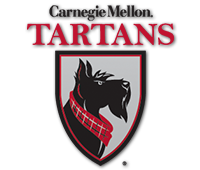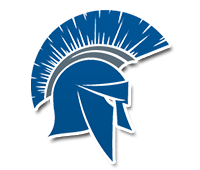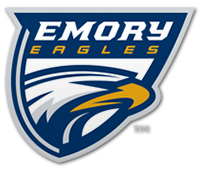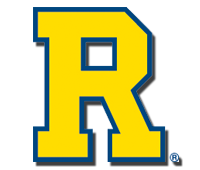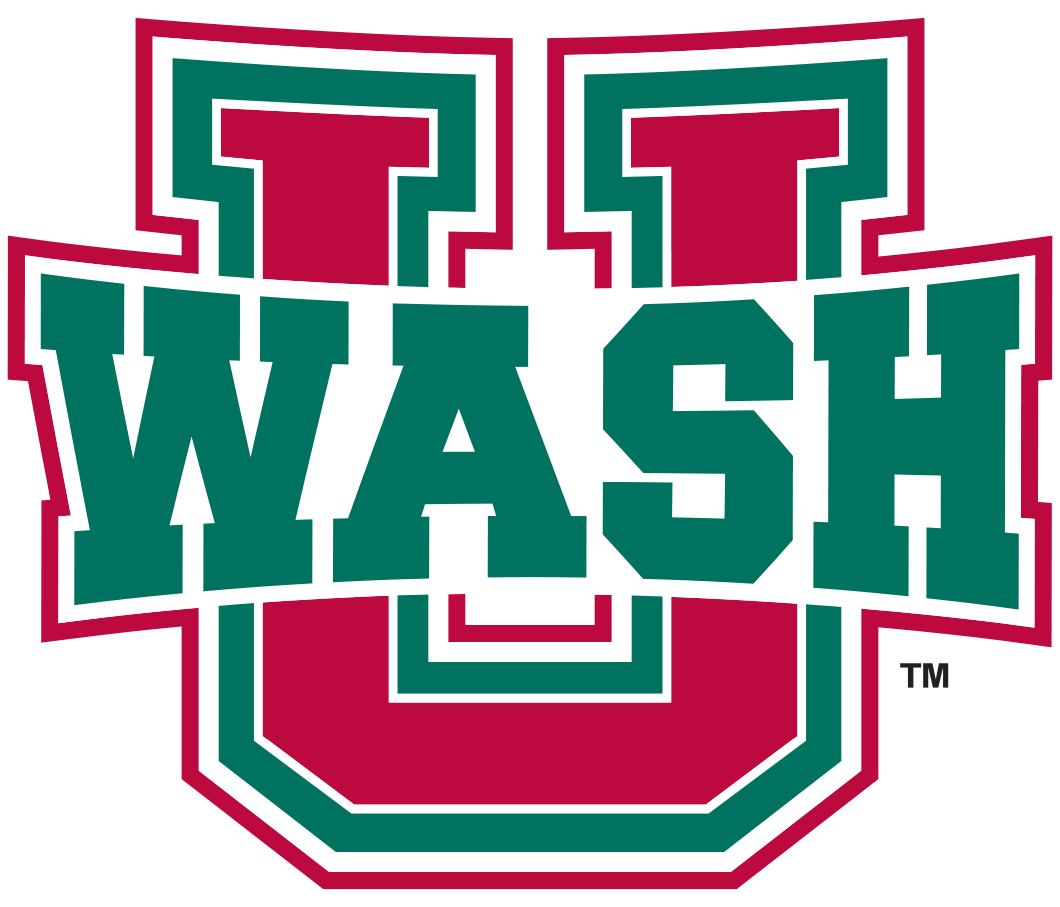
Marsha Harris remains the all-time leading scorer in NYU program history and led the Violets to the 1997 NCAA Division III Women’s Basketball Championship title with the game-winning basket. Since then, she followed her medical dreams to become a respected colorectal surgeon in New York.
“I applied to RPI (Rensselaer Polytechnic Institute), Columbia (University), and NYU without thinking about basketball,” Harris said. “At some point in my senior year (of high school), I decided I wanted to go pre-med and that intensified my looking at NYU."
Harris played basketball at August Martin High School, a basketball power, and played for legendary coach Joel Ascher. “Marsha was very fortunate to have strong people at August Martin,” said Janice Quinn, Harris’ head coach at NYU. “Joel and her guidance counselor were super helpful. Marsha, with her guidance counselor, looked at the best pre-med schools in the country with playing basketball as an afterthought. 'Where is the best pre-med program for her?' was 99 percent of the decision."
Jocelyn Katsock had been working part-time as the assistant women’s basketball coach at NYU when the assistant coaching position became full-time. “One of the first players I saw (while recruiting) once I became a full-time coach was Marsha,” she recalled. “A coach from Queens called me and told me about her.”
Katsock saw Harris play at the Wheelchair Classic at Riverbank State Park, a long-standing tradition featuring top high school players in New York City. “She was playing in an all-star game and having a great game against Chamique Holdsclaw (who went on to become a two-time Naismith College Player of the Year and lead University of Tennessee to three consecutive NCAA Division I Women’s Basketball Championship titles). My first thought was, ‘There is no way she is coming to NYU.'”
“Jocelyn called me on a pay phone and told me to get up there to Riverbank,” Quinn recalled. “I took a cab out there. Jocelyn stands with me, points to Marsha, and says, ‘that’s her.’ She was on defense, on offense, and before she was back on defense, I said, ‘There’s a national championship right there.’”
Katsock introduced herself and Quinn to Harris and asked if she was potentially interested in playing for NYU. “I remember Jocelyn came first and then she made Janice come down,” Harris added. “Right away, I felt that when Janice looks in your eyes, she is looking into your soul.”
“After the game, we found out she was a very serious student and focused on becoming a doctor,” Katsock stated. “College coaches from all over the country were talking about her. There was a lot of hype around her.”
“Marsha had, and has, such an incredible presence. We became very involved with her, she spoke to people on campus, and paid her deposit,” Quinn said. “It got some fanfare. There were Daily News and Newsday articles written about her. We didn’t talk a lot about basketball. The discussion was whether someone can play basketball and be pre-med. I told her, ‘It’s in our fiber. It’s what we do.’"
Quinn recalled attending Harris’ high school graduation and the speech she gave as the school’s valedictorian. “I went to watch her make that speech,” Quinn said. “She was very clinical. It was a phenomenal speech like she was running for office.”
Harris was not the first highly recruited New York City women’s basketball player to choose NYU. Donna Layne, who graduated in 1994, the year before Harris arrived on campus, was a two-time UAA Women’s Basketball Player of the Year. “Donna set the precedent of saying no to scholarship schools,” Quinn remarked. “She made a very different decision, that is a lot more expensive, for academics.”
First Year
Although expectations were high for Harris on the basketball court, she was looking at her experience like any incoming first-year student. “For me, I was still a freshman coming to college. It was still something new,” she said. “I played basketball, but I was more concerned about getting there and fitting in. We had some great upperclassmen (Kenya Jones, Mindy Sokalsky) who made the transition easier for me. It was an adjustment to be in college because I was living on campus, getting used to living in Manhattan.”
Tragedy struck the Harris family before Marsha had played her first collegiate game. Her mother was diagnosed with stage-four stomach cancer and passed away within a month of the diagnosis.
The Violets opened that season at the Muhlenberg College Tournament. “We walked through about seven or eight sets with Marsha in the hallway because she had been with her family leading up to the game,” Quinn remembered. “She had a great tournament in spite of not having practiced much.” NYU earned the tournament title and went on to finish 23-5 that season with four UAA losses and a loss to Salem State University in the round of 16 at the 1995 NCAA Division III Women’s Basketball Championship.

“The first year, we were still kind of stumbling and bumbling in spite of our success,” Harris remarked. “We knew we were missing pieces.”
“Freshman year was a remarkable revelation of Marsha’s athleticism and skill,” Quinn stated. “She was a young freshman student juggling pre-med and basketball. I remember the enormity of her academic load in that first season.”
Final Four and National Championship
The 1995-96 season was a groundbreaking one for NYU as the team began the season 20-0, with 18 wins by double-digits, including 11 wins by 20 or more points.
“We were young that second year and we went to the Final Four,” Harris recalled. “I started thinking, ‘We can really do something here. Something big can come out of this team.’”
One of the key additions to the team was first-year player Jehan Clark, who became the all-time steals leader in program history and was a two-time All-Association selection. Clark reveled in the chance to play with Harris.
“She was a great motivator, teacher, and role model,” Clark said. “She knew how to exhibit tough love when necessary, but also delighted in our individual successes. She was one of the most humble players I have had the privilege of playing with. She shared these same characteristics with Janice.”
“Marsha was all business. She expected a level of focus and intensity,” said Samiyrah Muhammad, who played center for the Violets. “There were times when she was in my face, whether it was about setting a screen or getting rebounds. A lot of times it was unspoken. You just wanted to do well in her presence.”
“Playing with Marsha, you always knew the best player on the court was on your team,” said teammate Jenny Schinella, who vividly recalls one of the first times she was on the court with Harris. “I went down the court with her on a fast break and I ended up making a reverse layup. I was just thankful it went in. When the other team called a timeout, Marsha walked right up to me with a smile on her face, put her hands on my face, and told me that if I am going to take that shot, I better make it. I remember her smile and my laugh in the moment, realizing maybe for the first time that I was part of a team.”
“Marsha was one of the hardest working players I have ever seen,” Katsock remarked. “Even when I coached at University of Maryland and seeing ACC (Atlantic Coast Conference) players, I had never come across someone so focused and determined to be great at whatever she did. She has a sustained commitment to what she wants to accomplish.”
The Violets finished 13-1 in UAA play, losing only to Washington University, to capture the Association title, their first outright championship and second title in program history. Harris was named UAA Player of the Year and joined teammate Jen Krolikowski as repeat first team All-Association honorees.
The team posted 40+-point wins over City College of New York and St. John Fisher College in the first two rounds of the 1996 NCAA Division III Women’s Basketball Championship to return to the round of 16. A dominating 77-48 win over perennial powerhouse University of Scranton and a 68-63 victory over Rowan University sent the Violets to the Final Four for the first time.
The Violets fell, 62-37, to University of Wisconsin-Oshkosh in the national semifinal and 75-51 to University of St. Thomas in the third-place match. “When I looked out on the court in 1996, I thought, ‘Dear God, we are outweighed.’ I felt we gave up 40 pounds at every position against Oshkosh. We looked underfed,” Quinn laughed.
“It was incredible to go so far, to go from the Sweet 16 to the Final Four,” Quinn added. “Yet we thought of it as not doing as well as we could have. Because of the personalities on the team, we were not satisfied. Marsha was not satisfied.”
“We were a special group of women. We were there for a purpose,” Muhammad commented. “It didn’t matter what got in our way. We needed to do well. We were hungry and we wanted success. Coach instilled this sense of excellence and we wanted it really badly. We went over the little things repeatedly like how to come off a screen, how to set a screen, how to make the outlet pass. These things made a difference.”
The 1996-97 team, which opened the season with 16 consecutive wins, seemed even stronger than the Final Four team. “We were just good. We could shoot the three and we had inside players,” Harris said. “We had flexible players who could play inside and outside. Other teams had to defend inside so that left Jen (Krolikowski) open. We had defenders, rebounders. We had it all.”
“That year, the unspoken (we never talked about the Final Four) and silent, powerful, enormous drive to win the national championship was led by Marsha and the starters,” Quinn said. “The mission engulfed us, but we never spoke about it.”
“Our mindset was that we were going back to the Final Four,” added Muhammad. “We don’t need to talk about it. We just need to do what we need to do.”
The unspoken drive fit Harris’ personality perfectly. “Marsha didn’t talk a lot. She didn’t need to,” Schinella said. “She was a true leader. She came to practice and worked hard. She expected you to work hard. Even if she didn’t come out and say it, you knew it was true. You didn’t just work hard because she worked hard, you worked hard because you wanted to deserve to be on the court with her.”
“When you see the kind of leadership Marsha showed by example, it motivates everyone around you,” Katsock said. “She was always wise beyond her years.”
The regular season game Harris still remembers most vividly is the Violets’ only loss that season, at Emory University. The Violets defeated the Eagles 87-59 at home, but less than two weeks later in Atlanta, lost by 10 points in double overtime. “I remember that game like it was yesterday,” she said. “That was the only year we beat WashU twice, but I remember that Emory game.” Even in defeat that game, Harris left her mark. “Marsha hit an impossible three-pointer at the end of the first overtime to tie it back up after we thought we had won it,” said then Emory head coach Myra Sims.
There were other tight games that season as well. “People came at us that year,” Quinn remarked. “We couldn’t sneak up on anyone. It was a battle. Marsha would just dig deeper and deeper and pull something out when we needed it most – just on gut, skill, and effort.”
Harris repeated as UAA Player of the Year with her and Krolikowski garnering first team All-Association accolades again. “Marsha’s skill level, speed, and ability to get to the rim exuded skill and athleticism,” Quinn stated. “But what I remember more is her diving for a loose ball, her pony tail coming out, her uniform half out. That team’s focus and grit was impressive and they were not to be denied.” Harris recalled the focus came from the players and from Quinn herself. “All you had to do was to do what Janice wanted,” she commented. “You did not deviate from the plan. Another thing that helped us was that we got along so well. This was a team with a lot of good players who didn’t get to play.”
Riding a seven-game winning streak and 23-1 record into the 1997 NCAA Division III Women’s Basketball Championship, the Violets rolled through Nazareth College, St. John Fisher, The William Paterson College, and William Smith College to return to the Final Four.

NYU hosted the championship weekend, opening with a semifinal rematch against Scranton. “It became so clear to me in that game that our players were trying to change the ending from the previous year,” Quinn said. “I thought I was the pilot of an enormous jet that I could not control. They were so determined. That is when I felt the power of that team.”
An 84-72 semifinal win set up a championship match against University of Wisconsin-Eau Claire. Things did not get off to a good start for the Violets. “Early in the game, Marsha said she needed a moment,” Quinn related. It turned out that she had torn all the ligaments in her thumb, which was now hanging down. “The trainer taped it up and secured it. She played the rest of the game in pain with nine fingers,” Quinn added.
NYU trailed for nearly the entire game, by as many as 14 points in the second half, before tying the score with 30 seconds remaining. “We had determined in that time-out that if they took an early shot, we would rebound and outlet the ball rather than call a time-out,” Quinn recalled. That is exactly what happened. UW-Eau Claire took an early shot, Ali Jaques rebounded the ball and sent an outlet pass to Harris, who scored on a layup in the final seconds with her taped hand. “The championship game typified the whole year,” Quinn stated. “We had to scratch and claw to get it done. It was symbolic the way we won. Marsha and that team would not be denied.”

“We had practiced all week for the exact play (UW-Eau Claire) ran,” Schinella said. “Ali had forced (UW-Eau Claire's All-American Erika Schmidt) forced her lower and a bit off the block. I ran to the low side to help her with a double team and the shot went off the backboard. When Marsha made that layup, it was like time stood still. The buzzer went off and the crowd rushed the court. I remember still standing on the opposite side of the court by myself jumping around. It felt like an eternity before I found the whole team in the center of the court.”
Muhammad remembers the game as if it just happened. “I was not tired that whole game. I was loose,” she said. “When Marsha got hurt, it showed what a warrior she is. You just wanted to do right by her. You would do whatever she needed you to do. That’s how we played that game.”
“Although we were down by double digits it never felt for one second like we were going to lose the game,” Schinella commented. “I remember this calm feeling of confidence at halftime. That starts with leadership. Marsha and Jen (Krolikowski) were the best players and leaders on the court. Their faith never wavered and therefore neither did ours.”
View the championship-winning basket here

Harris recalls that video being shown at one of the surgical conferences years later. “They played it and all I could think was them saying, ‘Look at this scrawny 19-year-old,’” she chuckled. “I appreciate the win because it is still on video. I still remember the end, but definitely not the beginning.”
The following season, the Violets reached the Sweet 16 before falling to familiar foe Rowan. “They were undefeated in 1996 when we beat them to get to the Final Four. They remembered us,” Quinn said. “You don’t win a championship and settle for less the next year, but we couldn’t get past Rowan.”
“I remember the losses,” Harris recollected. “I couldn’t tell you much about what happened in the championship season other than the last couple games. I can tell you about the game at Emory and how I didn’t even want to eat after that loss. I just wanted to get on the bus. I can tell you about the last game at Rowan.
“Senior year was kind of tough. We were trying to balance our younger players with our maturing players,” Harris said. “As upperclassmen, we couldn’t take everything over because we had to develop our younger players. We had tough losses that year with freshmen playing huge roles they were not accustomed to. The expectations were there, but we didn’t have the same nucleus any longer.”
“The thing I remember is the clinical way Marsha led the team through that year,” Quinn added. “I think when Marsha walked away, she did exactly what she planned to do. She literally closed the door and has been crushing the medical world ever since.”
“We were so united,” Muhammad said. “Still to this day, most of us are still friends and we are still a team. That is what Coach wanted with anyone who is part of the program, that sense of looking out for one another. We have that sense of community, woven together.”
“We reflected the city we were playing in,” Katsock added. “We wore it as a badge of honor to be this close, diverse team that we were.”
A four-time first team All-Association and two-time UAA Most Valuable Player, Harris finished her career with a program-best 2,140 career points. She also ranks first in career field goals (779), ranks second behind Clark in steals (299), second in free throws made (355), and third in three-pointers (227). The two-time first team All-American was the women’s recipient of the 1998 Walter Byers Award in recognition of being the NCAA’s top scholar-athlete.
“Whatever she did, she did better than everyone around her,” Schinella said. “Yet, if you ever said anything like that to her, she would just laugh at you and tell you that you were crazy. She was down to earth and humble. She didn’t consider her talent as something to boast about. It was just who she was.”

Medical School and Career
Harris stayed at NYU to attend medical school and found it to be quite an adjustment from her undergraduate experience. “The level of studying in medical school is not something you do as an undergraduate. It was almost like basketball again, dedicating yourself 100 percent to something,” Harris commented. “You cannot cram and the pace was a lot faster. What you would learn in two weeks in medical school is what you learn in an entire semester as an undergraduate.”
“The first two years (of four) are the hardest,” she added. “You want to do all the reading because you are doing what you came there for.” Harris did a research clerkship, being in service with Obstetrics and Gynecology for delivery and surgery. “I went in like a naïve third-year student. With the first rush of amniotic fluid, I knew I could not do that,” she laughed.
“I had always joked that I would be interested in surgery if it started at 9 a.m.,” she stated. “Yet I ended up going into surgery. I did my residency on rotations, from lumps and bumps through vascular surgery. I did a month each of neurosurgery, plastic surgery, pediatric surgery, and critical care trauma. If you want to do something other than that, you would have to take a special elective.”
After four years of working in surgery, Harris decided she wanted more flexibility in her schedule and a wide-ranging specialty so she became a colorectal surgeon. She has a set schedule, which includes performing colonoscopies on Mondays and major surgery on Fridays. She has office hours the other three weekdays for patient visits and small-scale problems.
She puts the same effort into her career as she did her studies and basketball career. “I really do give 100 percent. I go all out,” she said. “By the time I get to the weekend, I may hang out, but I can’t stay up until 2 a.m. like I once did. I use up so much energy during the week. Sundays, I go in and prepare for the next week.”
“My work can be exhausting, but the rewards are so great,” Harris remarked. “The majority of people are very appreciative. It makes you want to work this hard for these people.”
“There is a kind of adrenaline that comes from giving a person the opportunity to live pain-free,” she added. “It is a greater satisfaction that you can get anywhere else. Once you give someone another chance, they really take it to heart. It is not just affecting them, you are also helping their families. Patients come back smiling and doing things their health had prevented them from doing.”
A 2004 NYU Athletics Hall of Fame inductee, Harris has kept abreast of how the team is doing and occasionally gets the itch to play. “When the NCAA playoffs start or ‘March Madness’ begins, you get the bug,” she said. “Then you realize you are 40!”
Harris has turned her life’s plan into a career where she is making a profound difference in the lives of others. “The thing is I originally wanted to go into advertising. It was my father’s idea to study pre-med. It actually worked out. I enjoy every day,” she said.





